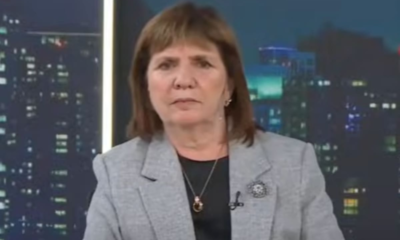INTERNACIONAL
Senators Ricketts, Fetterman unite against China’s quiet invasion of US farmland
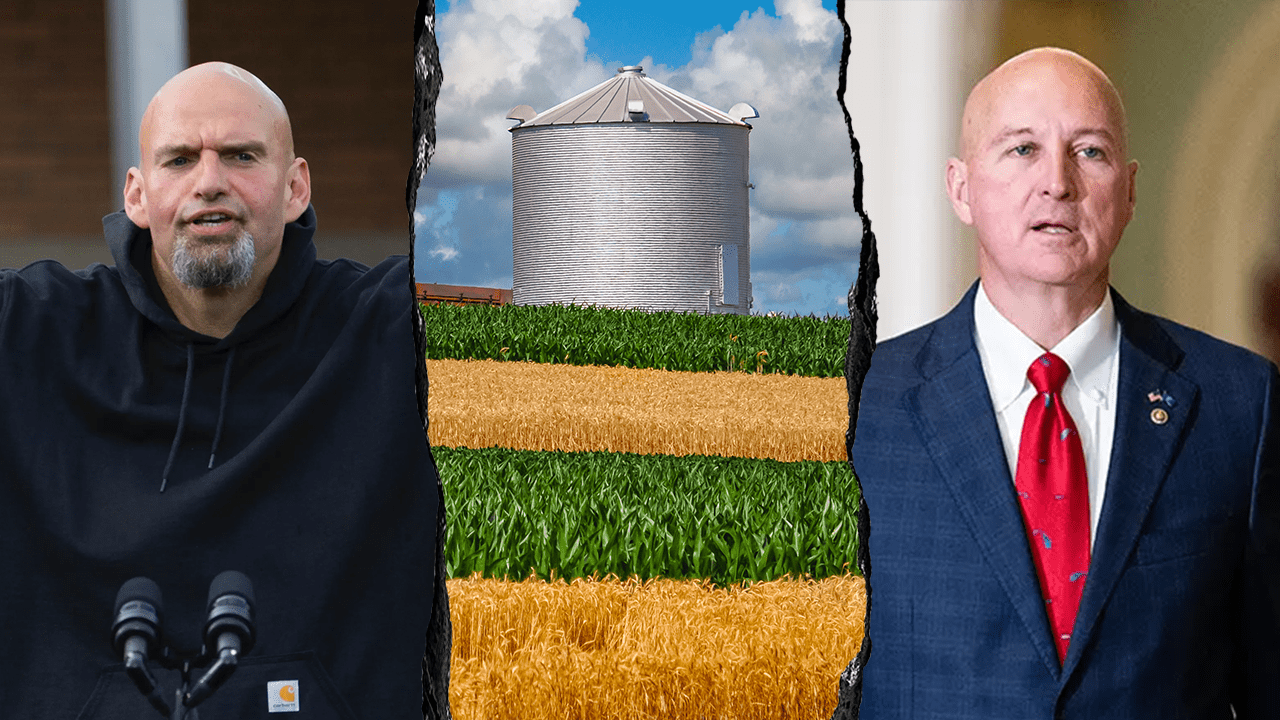
NEWYou can now listen to Fox News articles!
EXCLUSIVE: Republican Sen. Pete Ricketts is leading the charge with Democrat Sen. John Fetterman to codify oversight on foreign countries buying American farmland.
The bipartisan Agricultural Foreign Investment Disclosure (AFIDA) Improvements Act seeks to implement recommendations published by the Government Accountability Office (GAO) in January 2024, which found the AFIDA was ill-equipped to combat foreign ownership of American agricultural land.
«Communist China is our greatest geopolitical threat,» Ricketts told Fox News Digital in an exclusive interview, adding, «This is a way for us to improve the disclosure that’s going on with regard to the purchase of this agricultural land, so we can take other action if necessary to make sure we’re not giving Communist China the opportunity to buy agricultural land.»
The bill’s proposal comes as two Chinese nationals – a University of Michigan post-doctoral research fellow, Yunqing Jian, and Huazhong University of Science and Technology student Chengxuan Han – were held in federal custody after they were accused of smuggling biological materials into the United States.
RICKETTS, FETTERMAN TEAM UP FOR CRACKDOWN ON CHINA’S ATTEMPTS TO PURCHASE US FARMLAND
Sens. Fetterman, left, and Ricketts co-sponsored bipartisan legislation to protect American farmland. (AP/Getty)
The suspects have been charged with «smuggling a fungus that has been described as a «potential agroterrorism weapon» into the heartland of America, where they apparently intended to use a University of Michigan laboratory to further their scheme,» interm U.S. Attorney for the Eastern District of Michigan Jerome Gorgon said in a statement.
AFTER UKRAINE’S SURPRISE DRONE ASSAULT ON RUSSIA, NEW ATTENTION DRAWN TO SENSITIVE SITES STATESIDE
The fungus causes a «head blight,» described as a disease of wheat, maize, rice and barley, and is responsible for billions of dollars of economic losses throughout the world each year, according to the Department of Justice. If ingested by humans, the substance can cause vomiting, liver damage and «reproductive defects in humans and livestock.»
Department of Homeland Security Assistant Secretary Tricia McLaughlin told Fox News Digital that the Trump administration is focused on «keeping our homeland secure» through enhanced border screenings.
«Protecting America’s food supply and national security remains a top priority. Last week’s smuggling attempt by Chinese nationals of Fusarium graminearum, a dangerous crop-destroying fungus, posing a significant bioterrorism threat, only highlights this imperative to combat this threat,» McLaughlin said.
«That could potentially be very damaging to agriculture,» Ricketts told Fox News Digital. «We also know that Chinese nationals have been trying to steal our biotechnology with regard to agriculture. They’ve also been crashing gates of bases. Supposed Chinese tourists have been flying drones around bases. Of course, the Chinese flew a surveillance balloon over our country when the Biden administration just let that happen.»
Ricketts said China has been aggressively buying American agriculture, «which is why we need to have a heightened sense of vigilance around protecting our homeland.»

The main entrance to the Grand Forks Air Force Base near Grand Forks, North Dakota, on May 18, 2023. (Ben Brewer/Bloomberg via Getty Images)
Foreign investors own over 40 million acres of agricultural land in the United States, and between 2010 and 2021, Chinese ownership of American agricultural land increased from 13,720 acres to 383,935 acres, according to the U.S. Department of Agriculture (USDA).
«It’s not just about the number of acres that they own, but the fact that they own it around Grand Forks Air Force Base in North Dakota or Fort Liberty in North Carolina. They’re buying it around sensitive military installations,» Ricketts said.
The bill, also co-sponsored by Sens. Tommy Tuberville of Alabama, John Cornyn of Texas, Roger Wicker of Mississippi and Rep. Don Bacon of Nebraska, requires AFIDA reporting for foreign persons holding more than 1% interest in American agricultural land.
The AFIDA Improvements Act aims to increase information-sharing between the Committee on Foreign Investment in the United States and the USDA. It also requires updates to the AFIDA’s handbook and establishes a deadline for USDA to set up an online AFIDA system.
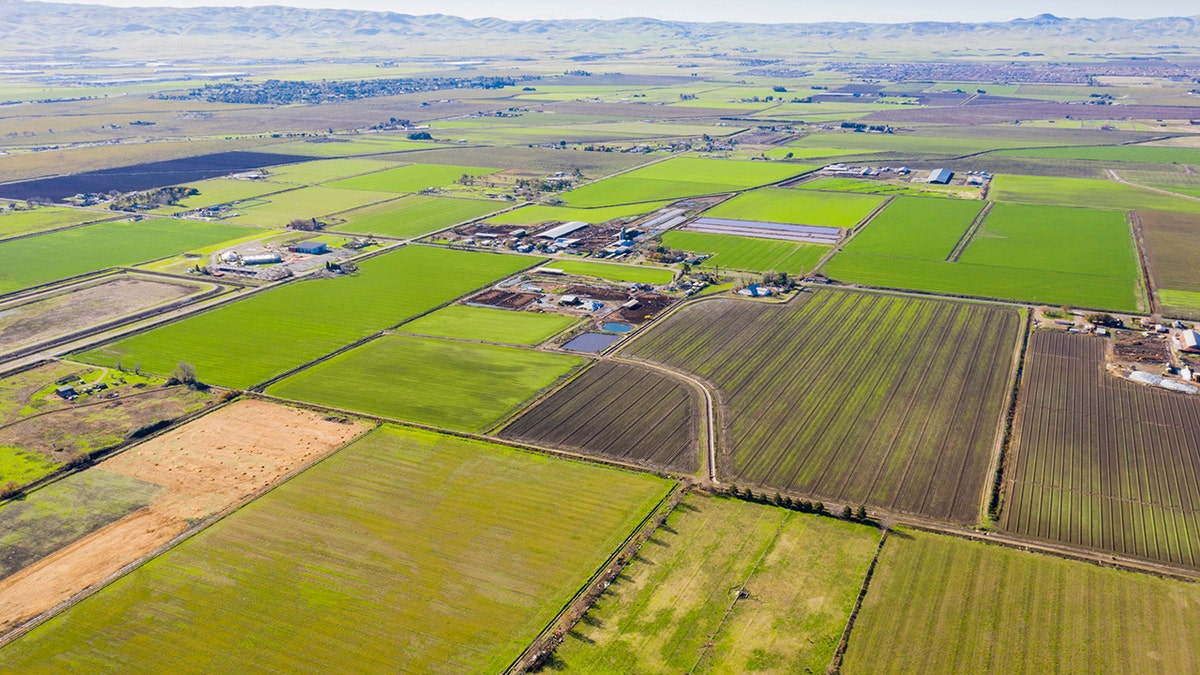
An aerial view of farmland in California’s central valley. (iStock)
Based on the GAO’s recommendations, the bill seeks to update the Agricultural Foreign Investment Disclosure Act of 1978 to better equip the USDA to combat foreign adversaries’ ownership of American agricultural land.
«We are at the most dangerous point in our history right now since World War II,» Ricketts said. «We have to be investing in our military. We have to be supporting our friends around the world that are pushing back on these dictators. Communist China is one of them.»
Additionally, the bill comes as conflict in the Middle East reaches a boiling point between Iran and Israel, reigniting concerns about national security. Israel successfully coordinated attacks against Iran from inside the country, and Ricketts pointed to Ukraine’s success in targeting a Russian air base.
CLICK HERE TO GET THE FOX NEWS APP
«What Ukraine was able to do against Russia with their operation that destroyed some of their strategic bombers, and they placed trucks with drones close to an air base and had those drones attack their squadrons. We could be vulnerable to the same thing if China did that here. They’ve owned farmland close enough to our air bases to be able to launch a drone strike. That should be very concerning to us,» Ricketts said.
Ricketts added that American farmland should not be a «tool that our adversaries, like Communist China, can use to attack us from inside our own country.»
There has been little movement on the bill since it was just recently introduced. That is largely because Senate Republicans are narrowly focused on advancing Trump’s «big, beautiful bill» ahead of a self-imposed July 4 deadline.
Fox News Digital’s Julia Bonavita and Alex Miller contributed to this report.
INTERNACIONAL
Innovación alimentaria y solidaridad: cómo las primeras civilizaciones afrontaron mil años de variabilidad climática
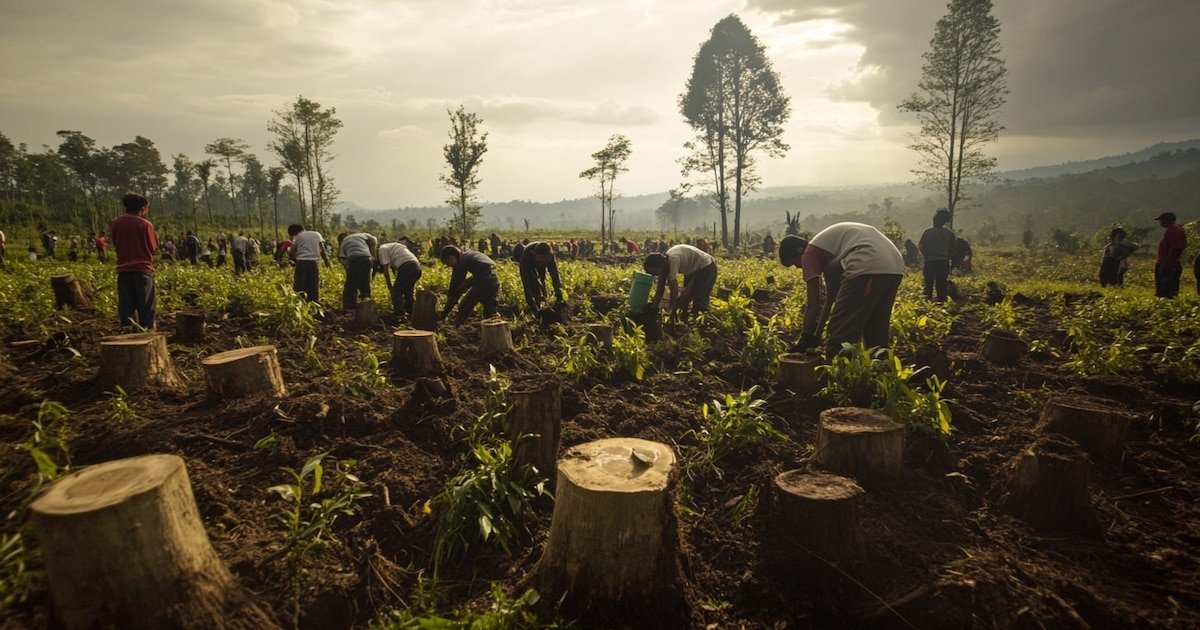
Una investigación multidisciplinaria basada en análisis arqueológicos e isotópicos demostró que las comunidades africanas, establecidas por algunos estudios científicos como cuna de la humanidad, lograron resistir más de 10.000 años de inestabilidad climática a través de prácticas alimentarias diversificadas y lazos comunitarios sólidos.
El trabajo, citado por The Conversation, examinó restos humanos y animales de 187 yacimientos en todo el continente africano, brindando una perspectiva integral sobre la evolución de los sistemas de subsistencia en distintos contextos ecológicos. La clave de esta resiliencia no fue un modelo único de agricultura o ganadería, sino la capacidad de adaptación mediante estrategias complementarias.
El equipo de investigación adoptó un enfoque continental, utilizando datos de isótopos estables presentes en huesos antiguos. Este método permitió reconstruir los patrones dietarios y las estrategias de subsistencia empleadas por distintas sociedades africanas durante el Holoceno.
Los resultados fueron clasificados en “nichos isotópicos”, es decir, categorías que agrupan modos de vida según características ambientales y culturales. Esto permitió observar que el desarrollo alimentario no siguió una línea progresiva única, sino que se construyó como un mosaico de respuestas adaptativas a condiciones cambiantes.
Se trata del primer estudio que rastrea a esta escala la historia alimentaria del continente a través de análisis isotópicos, ofreciendo una nueva mirada sobre cómo se forjaron los sistemas de producción en distintos momentos de la historia.

El trabajo destaca que la supervivencia ante los vaivenes climáticos se sustentó en la combinación de prácticas como el pastoreo, la agricultura, la pesca y la recolección. En lugar de depender de un solo modelo intensivo, las comunidades integraban varias actividades de manera simultánea, ajustándolas a los contextos locales.
Este enfoque multiestratégico se verificó tanto entre distintas regiones como dentro de las propias comunidades. El principio rector era la flexibilidad: modificar las prácticas frente a alteraciones del entorno sin adherirse de forma exclusiva a una sola fuente de subsistencia.
El equipo de científicos subrayó que la resiliencia no dependía del método “más eficiente” en términos productivos, sino de mantener abiertas múltiples posibilidades que pudieran responder a crisis o transformaciones ecológicas.
Los datos permiten observar cómo las comunidades adaptaron sus sistemas alimentarios a lo largo del tiempo y el espacio. En el sur de África, en territorios correspondientes a Botswana y Zimbabue, grupos sociales combinaron el cultivo, la recolección de productos silvestres y la cría de ganado, especialmente tras el fin del llamado Periodo Húmedo Africano, hace unos 5.500 años.

En el valle del Nilo, especialmente en Egipto y Sudán, las poblaciones desarrollaron sistemas mixtos que incluían la agricultura de cereales, la pesca, la producción láctea y la elaboración de bebidas fermentadas. Estas combinaciones respondían a las condiciones locales y a la disponibilidad de recursos.
Los sistemas pastoriles —vinculados al cuidado y movilidad del ganado— fueron particularmente frecuentes y diversos. La variedad de señales químicas en los restos arqueológicos sugiere una alta capacidad de ajuste a entornos contrastantes, desde zonas áridas hasta regiones montañosas.
La investigación concluye que la diversidad productiva no hubiera sido suficiente sin la existencia de vínculos comunitarios sólidos. Durante períodos de estrés, como la transición climática que puso fin al Periodo Húmedo Africano, se intensificaron los intercambios de alimentos, conocimientos y trabajo entre distintos grupos.
Estas formas de cooperación permitieron compartir tierras y recursos, así como transmitir saberes sobre prácticas sostenibles. Por ejemplo, en ciertas regiones, los animales eran criados no como principal fuente alimentaria, sino como respaldo ante la pérdida de cultivos, una estrategia que funcionaba como red de seguridad.

Esta organización colaborativa favoreció la continuidad de los sistemas pastoriles incluso durante los últimos mil años, especialmente en regiones donde la aridez se convirtió en un rasgo dominante del paisaje.
El estudio plantea una crítica directa a las políticas de desarrollo que promueven modelos intensivos y estandarizados. Según los investigadores, esas estrategias no consideran la diversidad ecológica y social que caracteriza muchas regiones del mundo, en especial en el continente africano.
La experiencia histórica documentada en este análisis sugiere que los sistemas alimentarios flexibles, integradores y sostenibles son más eficaces para enfrentar escenarios de cambio climático. Lejos de imponer modelos únicos, las políticas deberían adaptarse a las realidades locales y promover la colaboración intercomunitaria.
El artículo cita que las sociedades africanas históricamente construyeron sus decisiones alimentarias “en sintonía con la tierra y el mar, no en oposición a ellos”. En ese tono, los autores del estudio indicaron que la trayectoria de las comunidades africanas representa un referente útil para enfrentar los desafíos contemporáneos. Frente a un contexto global de incertidumbre climática, las estrategias milenarias de adaptación y cooperación pueden ofrecer una guía para diseñar sistemas más resilientes y sostenibles.
gente,prepara alimentos,programa de apoyo nutricional de zimbabue
INTERNACIONAL
Michelle Obama portraitist’s exhibit with trans Statue of Liberty pulled after pressure from Vance

NEWYou can now listen to Fox News articles!
EXCLUSIVE: Artist Amy Sherald canceled her upcoming exhibit featuring a portrait of a transgender Statue of Liberty at the Smithsonian’s National Portrait Gallery after Vice President JD Vance raised concerns the show included woke and divisive content, Fox News Digital has learned.
President Donald Trump signed an executive order in March that placed Vance in charge of overseeing the removal of programs or exhibits at Smithsonian museums that «degrade shared American values, divide Americans based on race, or promote programs or ideologies inconsistent with Federal law and policy.»
Vance said Sherald’s «American Sublime» exhibit violated Trump’s executive order and was an example of woke and divisive content during a meeting June 9 with the Board of Regents, a source familiar with the meeting told Fox News Digital.
ARTIST PULLS ART FROM SMITHSONIAN GALLERY AFTER MUSEUM TRIES TO ALTER HER TRANS STATUE OF LIBERTY PAINTING
Arewà Basit stands in front of Amy Sherald’s painting, «Trans Forming Liberty» on display at the Whitney Museum of American Art in Manhattan, N.Y., April 2, 2025. (Tiffany Sage/BFA/Shutterstock)
«Vice President Vance has been leading the effort to eliminate woke indoctrination from our beloved Smithsonian museums,» an administration official said in an email to Fox News Digital. «On top of shepherding the One Big Beautiful Bill through the Senate and helping President Trump navigate international crises, the vice president has demonstrated his ability to get President Trump’s priorities across the finish line.»
Sherald, best known for painting former first lady Michelle Obama’s official portrait in 2018, announced Thursday she was pulling her show, «American Sublime,» from the Smithsonian’s National Portrait Gallery slated for September, The New York Times first reported.
Sherald said she was rescinding her work from the exhibition after being told that the National Portrait Gallery had some concerns about featuring the portrait of the transgender Statue of Liberty during the show. The painting, «Trans Forming Liberty,» depicts a trans woman with pink hair wearing a blue gown.
TRUMP WHITE HOUSE CALLS OUT SMITHSONIAN FOR PUSHING ‘ONE-SIDED, DIVISIVE POLITICAL NARRATIVES

Amy Sherald attends the 2023 Tribeca Ball at the New York Academy of Art April 4, 2023, in New York City. (Santiago Felipe/Contributor)
«These concerns led to discussions about removing the work from the exhibition,» Sherald said in a statement, The New York Times first reported Thursday. «While no single person is to blame, it’s clear that institutional fear shaped by a broader climate of political hostility toward trans lives played a role.
«This painting exists to hold space for someone whose humanity has been politicized and disregarded. I cannot in good conscience comply with a culture of censorship, especially when it targets vulnerable communities.
«At a time when transgender people are being legislated against, silenced and endangered across our nation, silence is not an option,» Sherald added. «I stand by my work. I stand by my sitters. I stand by the truth that all people deserve to be seen — not only in life, but in art.»
The Smithsonian did not immediately respond to a request for comment regarding Vance’s involvement in the matter.
DEFUNDING DEI: HERE’S HOW THE TRUMP ADMINISTRATION HAS UNDONE BIDEN’S VERY PRIZED PROGRAMS
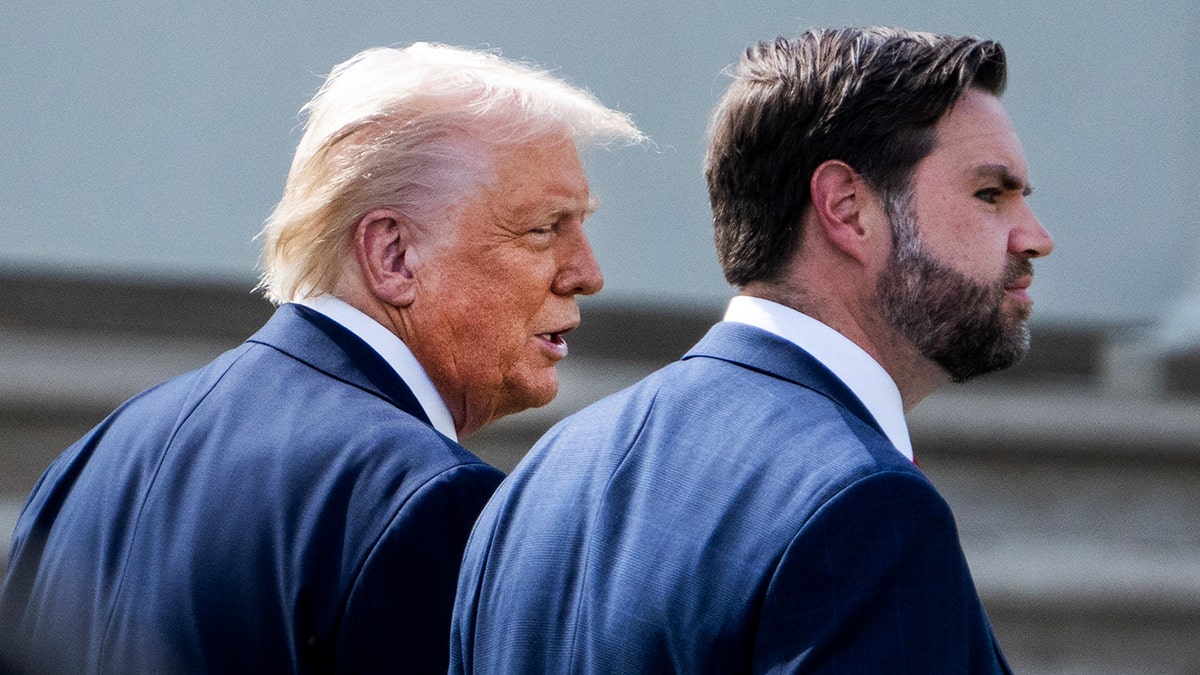
President Donald Trump and Vice President JD Vance after a ceremony with the 2025 national champion Ohio State Buckeyes on the South Lawn of the White House April 14, 2025. (Tom Williams/CQ-Roll Call, Inc via Getty Images)
The White House said the removal of Sherald’s exhibit is a «principled and necessary step» toward cultivating unity at institutions like the Smithsonian.
CLICK HERE TO GET THE FOX NEWS APP
«The ‘Trans Forming Liberty’ painting, which sought to reinterpret one of our nation’s most sacred symbols through a divisive and ideological lens, fundamentally strayed from the mission and spirit of our national museums,» Trump special assistant Lindsey Halligan said in a statement to Fox News Digital.
«The Statue of Liberty is not an abstract canvas for political expression. It is a revered and solemn symbol of freedom, inspiration and national unity that defines the American spirit.»
Other members of the Smithsonian’s Board of Regents include the Chief Justice of the United States, John Roberts, along with senators John Boozman, R-Ark.; Catherine Cortez Masto, D-Nev.; and Gary Peters, D-Mich., along with several other House members.
Fox News’ Gabriel Hays contributed to this report.
INTERNACIONAL
Hambre, muerte y desesperación en Gaza: ¿Por qué no llega la ayuda humanitaria que tanto se necesita?
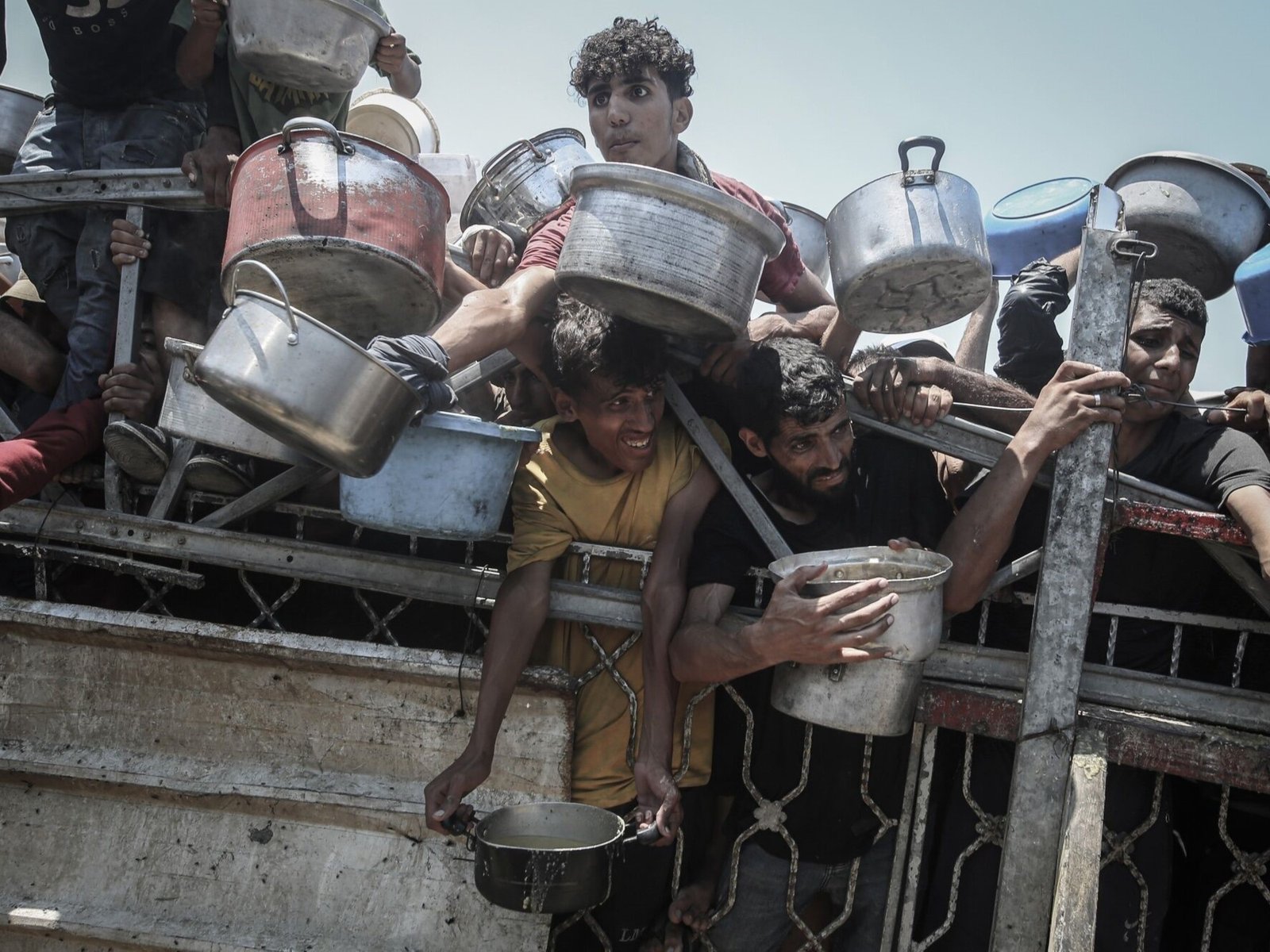
Ataques en centros de entrega de alimentos
Toneladas de ayuda bloqueada
Qué dice Israel

 POLITICA2 días ago
POLITICA2 días agoMáximo Kirchner declaró una fortuna de 8.300 millones de pesos: representa un 76% más que el año anterior

 POLITICA1 día ago
POLITICA1 día agoLa justicia de Santa Cruz desafío a la Corte Suprema e incluyó a Cristina Kirchner en el padrón electoral

 POLITICA2 días ago
POLITICA2 días agoQué dijo Javier Milei en la Derecha Fest: las frases más impactantes

















